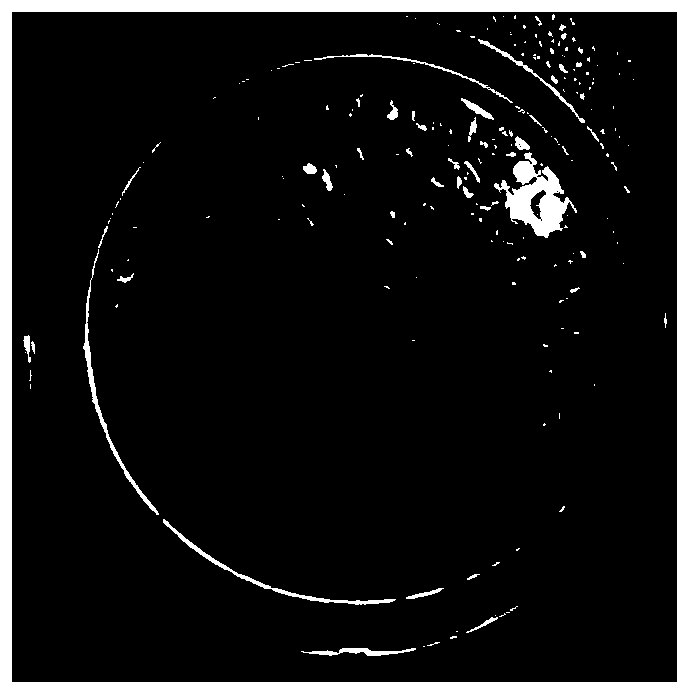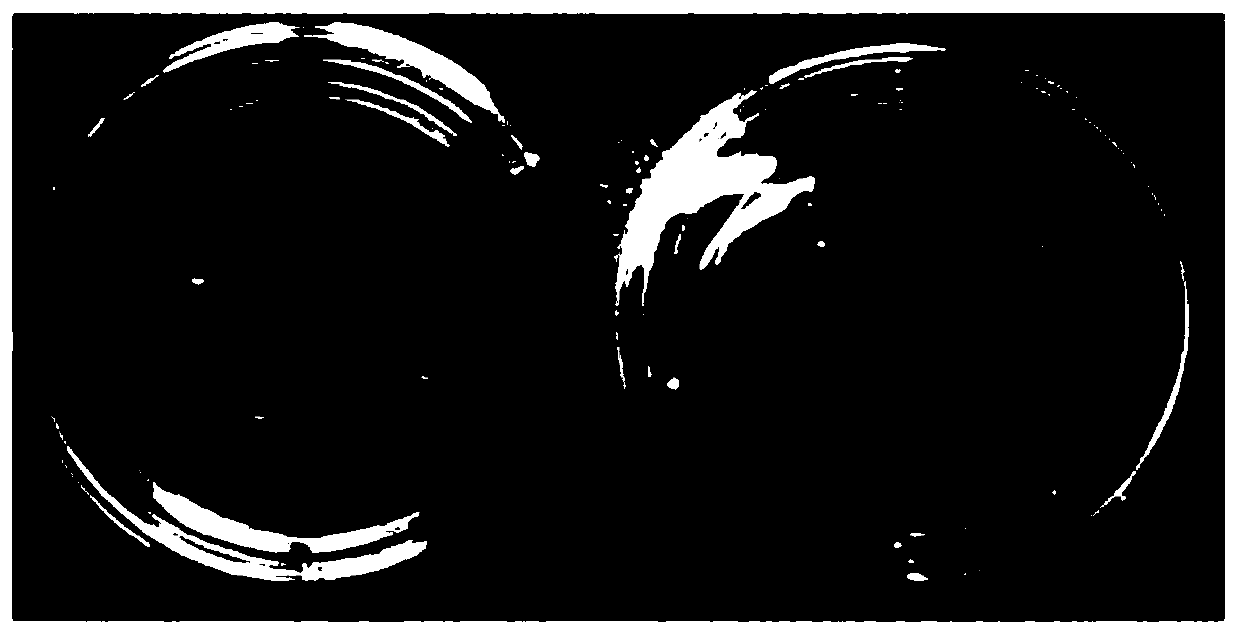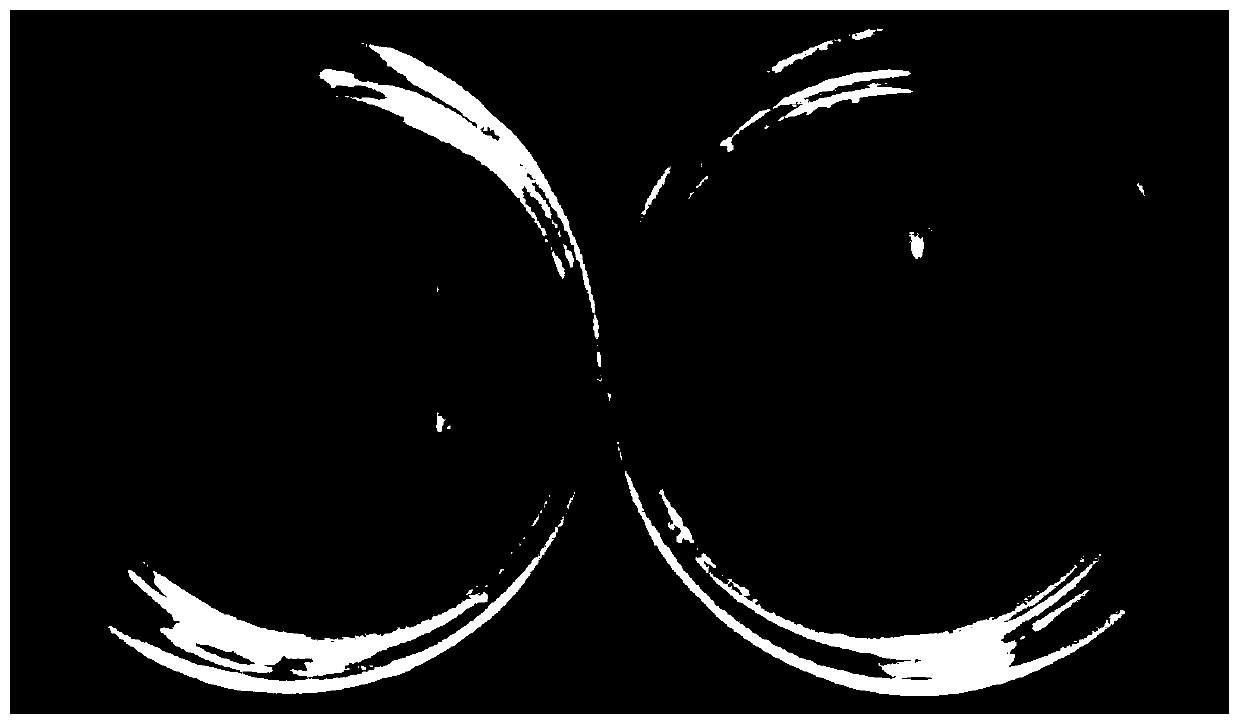A kind of single spore separation method of wheat powdery mildew
A technology for isolation of wheat powdery mildew bacteria and single spores, applied in the direction of microorganism-based methods, isolation of microorganisms, biochemical equipment and methods, etc., can solve the problem of synthetic medium growth, can not discharge "single" colonies, and is not suitable for wheat powdery mildew bacteria single Spore separation and other problems, to achieve the effect of simple and easy method
- Summary
- Abstract
- Description
- Claims
- Application Information
AI Technical Summary
Problems solved by technology
Method used
Image
Examples
Embodiment 1
[0022] The monospore isolation method of embodiment 1 wheat powdery mildew
[0023] (1) Put the wheat powdery mildew diseased leaves collected in the field in an ice box, blow off the old spores on the surface, put them on the agar fresh-keeping medium containing benzimidazole (50mg / L), 17°C, 18h light, Cultured in a 6-hour dark light incubator to reproduce fresh conidia.
[0024] (2) Collect the fresh conidia of step (1) on the ultra-clean workbench and collect them in a centrifuge tube, and use electronic fluorinated liquid C5-18-perfluoroalkane (FC-40) to adjust the concentration to 10 2 spores / ml.
[0025] (3) Draw the spore suspension of 100 μl of step (2), and apply it evenly on the 1.5% agarose plate with a spreader, then use the colony puncher (diameter 3mm) to beat the agarose plate into a uniform bacterial dish, See figure 1 .
[0026] (4) find oval-shaped single spores on the agarose plate of step (3) with a dissecting microscope, that is, single conidia of powd...
Embodiment 2
[0030] Embodiment 2: the efficiency of picking single spores with different spore concentrations
[0031] Cut the first leaf of the pre-prepared susceptible variety "Jinmai 47" to a length of 3 cm, select 10 leaves and put them on the agar fresh-keeping medium containing benzimidazole (50 mg / L), and put them on the ultra-clean bench. Collect the fresh conidia that have been propagated in advance into a sterile 5mL centrifuge tube, draw 4mL of C5-18-perfluoroalkane (FC-40) solution into the centrifuge tube containing spore powder, and make an inoculum suspension. Use a Vortex shaker to oscillate for 30s to suspend the spores evenly in the solution, draw 10 μL of the suspension and adjust the spore concentration to 10 with a hemocytometer under the microscope 5 、10 4 、10 3 、10 2 and 10 1 1 / mL, take 100ul of spore suspension, and evenly spread it on a 1.5% agarose plate with a spreader. After the fluoride solution evaporates, randomly punch holes on the plate. Find the mono...
Embodiment 3
[0033] Example 3: Screening of inoculation methods
[0034] According to embodiment 1, inoculate the detached leaf section of wheat, adopt upside-down respectively, two kinds of modes of inoculating with bacteria dish ( figure 2 ), see the result image 3 . Depend on image 3 It can be seen that the fungus discs upside down (the side containing spores) can be successfully morbidity, and the upside down (the side without spores) bacteria discs cannot form colonies, and the inoculation is unsuccessful. Therefore, the upside down method is all used in this single spore isolation technology system.
PUM
 Login to View More
Login to View More Abstract
Description
Claims
Application Information
 Login to View More
Login to View More - R&D
- Intellectual Property
- Life Sciences
- Materials
- Tech Scout
- Unparalleled Data Quality
- Higher Quality Content
- 60% Fewer Hallucinations
Browse by: Latest US Patents, China's latest patents, Technical Efficacy Thesaurus, Application Domain, Technology Topic, Popular Technical Reports.
© 2025 PatSnap. All rights reserved.Legal|Privacy policy|Modern Slavery Act Transparency Statement|Sitemap|About US| Contact US: help@patsnap.com



